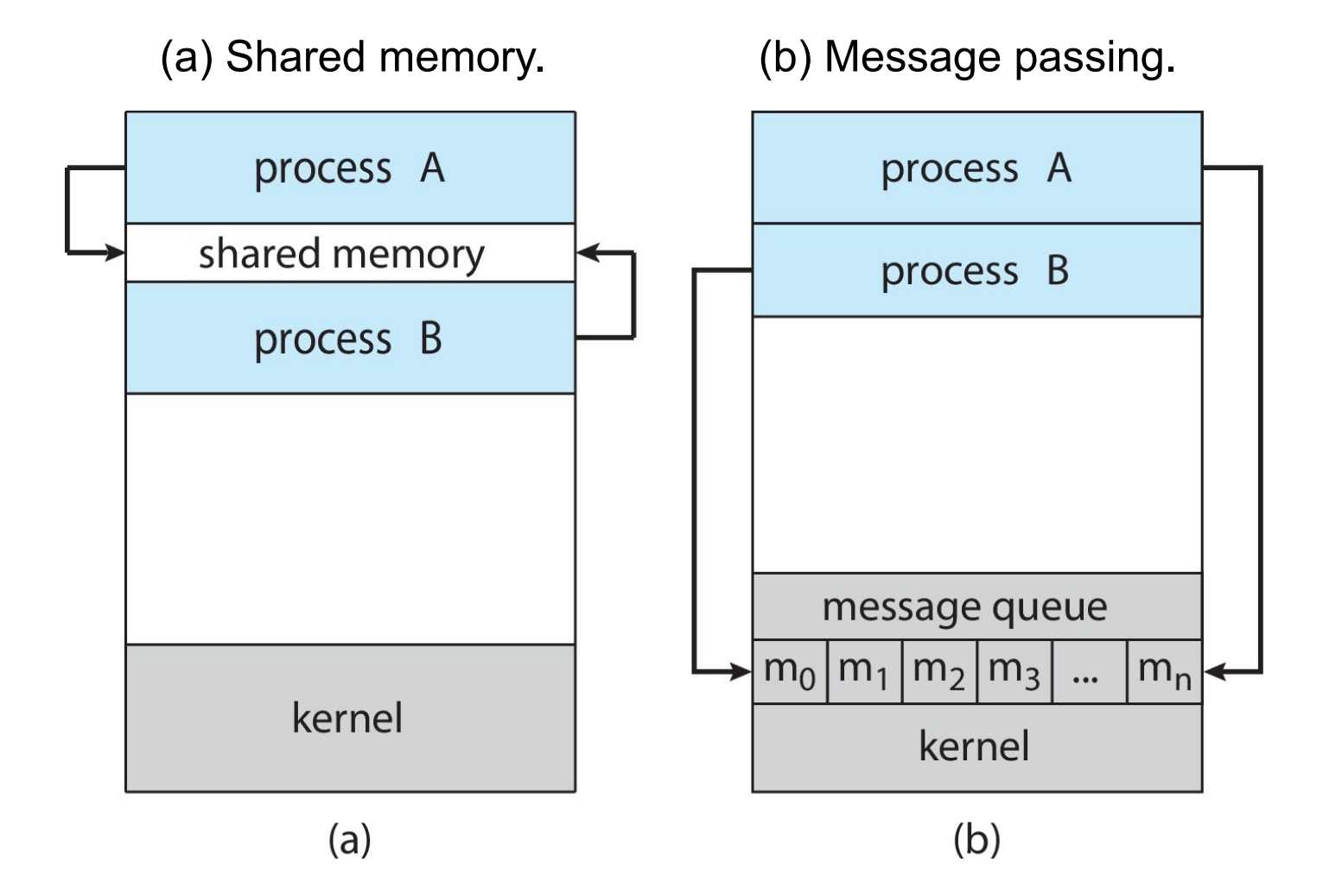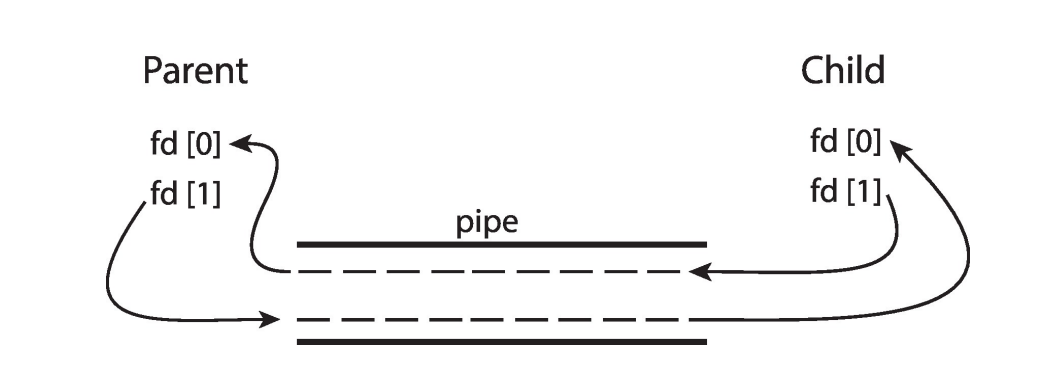Inter-Process Communication¶
Reasons for cooperating processes¶
- Information sharing
- Computation speedup
- Modularity
- Convenience
IPC Communication Models¶

-
Most OSes implement both models
-
Message-passing
需要内核空间支持
- useful for exchanging small amounts of data
- simple to implement in the OS
- sometimes cumbersome for the user as code is sprinkled with send/recv operations
-
high-overhead: one syscall per communication operation
-
Shared memory
非内核空间
- low-overhead: a few syscalls initially, and then none
- more convenient for the user since we’re used to simply reading/writing from/to RAM
- more difficult to implement in the OS
Shared Memory¶
- Processes need to establish a shared memory region
- One process creates a shared memory segment
-
Processes can then “attach” it to their address spaces
-
Processes communicate by reading/writing to the shared memory region
- They are responsible for not stepping on each other’s toes
- The OS is not involved at all
ipcs -a可以查看当前 IPC 的状态。
- Question: How do processes find out the ID of the shared memory segment?
- Better solution: one could use message-passing to communicate the id!
存在问题:不安全。任何人拿到 share_id 都可以把共享内存 attach 到自己进程上,可以观察到其他进程的数据、甚至做 DOS 攻击。
Message Passing¶
- Two fundamental operations:
- send: to send a message (i.e., some bytes)
- recv: to receive a message (i.e., some bytes)
If processes P and Q wish to communicate they
- establish a communication “link” between them
This “link” is an abstraction that can be implemented in many ways (even with shared memory!!)
-
place calls to
send()andrecv() -
optionally shutdown the communication “link”
- Implementing Message-Passing
Implementation of communication link
-
Physical:
-
Shared memory
- Hardware bus
-
Network
-
Logical:
-
Direct or indirect
- Direct
有一个 P 和 Q,直接发信息。如果有 n 个进程,需要建立 \(C^2_n\) 个连接。每对之间仅存在一个link,link通常是bi-directional的
-
Indirect
-
有一个 mailbox,发信息相当于发给一个 mailbox。Each mailbox has a unique id. 如果有多个进程,我们需要确定是由哪个进程接收信息。
- 多个进程接收时,有以下solution
- 一个link最多只允许与两个process建立联系
- 同时间只允许有一个process执行receive操作
- Allow the system to select arbitrarily the receiver
-
Processes can communicate only if they share a mailbox
- Each pair of processes may share several communication links 允许系统任意选择接收机
-
Synchronous or asynchronous
- Synchronous: Blocking is considered synchronous
即我们发信息,如果接收者没收到信息,发送者就堵塞着不走;我们收信息,如果发送者没有发送信息,接送者就堵塞着不走。
-
Asynchronous: Non-blocking is considered asynchronous
-
Non-blocking send -- the sender sends the message and continue
Non-blocking receive -- the receiver receives a valid message, or null message
-
异步效率更高,同步时效性更高。
-
Automatic or explicit buffering
- Zero capacity - no messages are queued on a link. Sender must wait for receiver.
- Bounded capacity - finite length of n messages. Sender must wait if link full.X
- Unbounded capacity - infinite length. Sender never waits.
Pipes¶
- Ordinary Pipes:没有名字,只能通过
fork()来传播。 Ordinary pipes are unidirectional - Producer writes to one end (the write-end of the pipe) - Consumer reads from the other end (the read-end of the pipe)

注意 fd[0] 是 read-end,fd[1] 是 write-end(对于双方都是)
Windows calls these anonymous pipes
-
Named Pipes - communication是双向的 - 不需要parent-child relationship - 多个进程间可以使用named pipes 进行通信
-
In UNIX, a pipe is mono-directional. 要实现两个方向一定需要两个 pipe。
- The command “ls | grep foo” creates two processes that communicate via a pipe
- The ls process writes on the write-end
- The grep process reads on the read-end
Client-Server Communication¶
广义上的 IPC,因为是跑在两个物理机器上的交互。
-
Sockets
-
RPCs(Remote Procedure Calls)
所有的交互都是和 stub 通信,stub 会和远端的 server 通信。 存在网络问题,如丢包。
- Java RMI
RPC in Java

